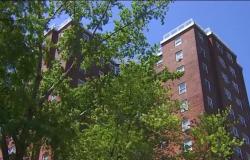
Eduardo Schaberger Poupeau He has been passionate about astronomy since he was very young; His hobby was reading books related to the Milky Way, the stars and spaceships. However, At thirty years of age, he began his career as an astrophotographer after being amazed by a telescope. He began to capture images of the sky, and then a very particular star: the Sun. Thanks to his dedication and vocation, he obtained recognition from NASA, the most prestigious observatory in this field, and the most important scientific magazines in the world.; but more than prizes they were pushes to continue experimenting.
He was born in Rafaela, a city with a history based on the development of agriculture, whose architecture was dominated by low houses and open skies. “I went out to the patio and since the sky was so dark I could see the stars very clearly. It was something that never ceased to amaze me. “It fascinated me and completely captivated me”, he began remembering. The man from Santa Fe grew up with her grandparents: “He was a bricklayer and she was a housewife. My grandfather had up to third grade and my grandmother had up to second grade. They were both born in rural areas because at that time you learned to read and write, and they sent you to the field. However, they were convinced that education was what allowed you to get ahead; what could save you.”
We do this project collectively. Support El Destape with a click here. Let’s continue making history.
SUBSCRIBE TO THE DISCOVERY
That is why Eduardo, from a very young age, immersed himself in reading. “In the bookstore in my town they trusted me. I went every once in a while to look for books, and my grandfather would later come by and pay for them.”, commented the man. So His curiosity about astronomy was awakened.. “The time had a lot to do with it. At that time, space exploration was booming. There was a lot of discussion on that topic. The newspapers kept mentioning it, and the magazines kept displaying photographs of comets,” he mentioned. At the same time, the “Cosmos” series was in vogue, presented by renowned astrophysicist Neil deGrasse Tyson, who explored humanity’s heroic quest for knowledge of the laws of science. Eduardo Schaberger was nourished by many concepts but, at that time, he could not put them into practice since he did not have the financial resources.
Years passed, he graduated from school as a Computer Technician, and then began a career as a Systems Analyst about 40 kilometers from his city. “I worked in the morning and in the afternoon I studied. I was away from home for many hours but it was for a good cause,” he explained. The man from Santa Fe had very good grades but in his youth he decided to change course. “I was caught by the bicycle craze; “I wanted to run in one,” he said. That’s how he left his studies, and proceeded to work double shifts in order to save up and buy his first bicycle. After a while he moved up a notch and got a job repairing racing bicycles.
But at 30 years old he swerved again. He left cycling to dedicate himself fully to photography. The passage of Comet McNaught marked a milestone in his life. From then on he began to record the sky. “You don’t see these types of bodies often. “I was lucky enough to capture one with my camera, and publish it in the newspaper of my city,” He said with great emotion. At the same time, the man from Santa Fe had the opportunity to observe the Sun through a telescope. “In Rafaela, a small astronomical group had a solar telescope. One day they invited me to a photo exhibition at the chalet, and During the presentation they asked me if I wanted to see the star through the telescope. Obviously I said yes, and I was blown away. “It blew my mind to see the Sun in such detail,” he said. From that moment on she started campaigning to get a similar solar telescope.
And that’s how, after years of hard work, he was able to share the photo that identifies him. “Thank God I was able to capture an incredible event: an explosion that launched a jet of plasma more than 200,000 kilometers high from the south pole of the Sun,” celebrated on their networks. To get this photograph, The instruments used by Eduardo traveled the 150 million kilometers that separate the Earth from the Sun.
“If the weather conditions allow it, practically every day I am taking photos of the Sun. I follow it constantly. I have alerts on my phone that let me know if there’s been a solar flare or something, so I’m pretty aware of what’s going on. Anyway, this prominence took me by surprise because these events are not predictable. They can happen at any time.” And that’s how Eduardo received an alert. “I was right in my optimal window for taking photos, which is around mid-morning. The weather here was quite complicated: there was a lot of turbulence and cloudiness,” described the astrophotographer who immediately took action. He began to take the tripod, the mount, the telescope out to the patio. She lined everything up and then turned it on. He looked for the Sun, and projected it on the computer. He started making the catches for about 12 minutes, and after that the prominence had been reduced by half. “It was something that didn’t last long so it was really very intense.”he emphasized.
“You apply all the tricks you have because when you see the event you know that it is unique and that you cannot miss the opportunity.” In this case he applied a technique called “lucky imaging”, which would be something like lucky imaging. Astronomical cameras are used that are very fast in capturing many frames per second. “I made small video sequences of very high quality. I tried to be lucky, in quotes, that some of those paintings coincided with moments of very good stability in the atmosphere., which happen in fractions of a second. Then, using special software, analyze all those images that were captured and stack them to reduce the digital noise generated by the sensors. In this way, I obtained an image that I later finished processing to give it a little more sharpness,” he detailed.
The explosion was rare – and that is also why the photo had quite an impact – because it occurred at the south pole of the Sun. Generally, prominences do not occur at the poles, but rather closer to the equator line where sunspots form. Today, Eduardo continues to be surprised by the dynamism of the sun: “One day you can see a solar explosion and the next day spots that change their shape. It is the only star that we can see in detail due to its proximity and that it is constantly changing.”
Eduardo does not travel much because he considers that seeing the Sun is already traveling 150 million kilometers: “These are moments that, when I measure them, make me excited and feel small.” The astrophotographer understands that our knowledge about the universe is practically zero compared to what we have in front of our eyes. As a result of this, he shares videos on his social networks so that his followers can transport themselves to space and get to know the Moon and the Sun. He also takes the time to give astronomy talks at schools; perhaps, emulating a legacy he received from his grandparents. But always with one objective: to sow curiosity about what all human beings share, the universe and its enigmas.





